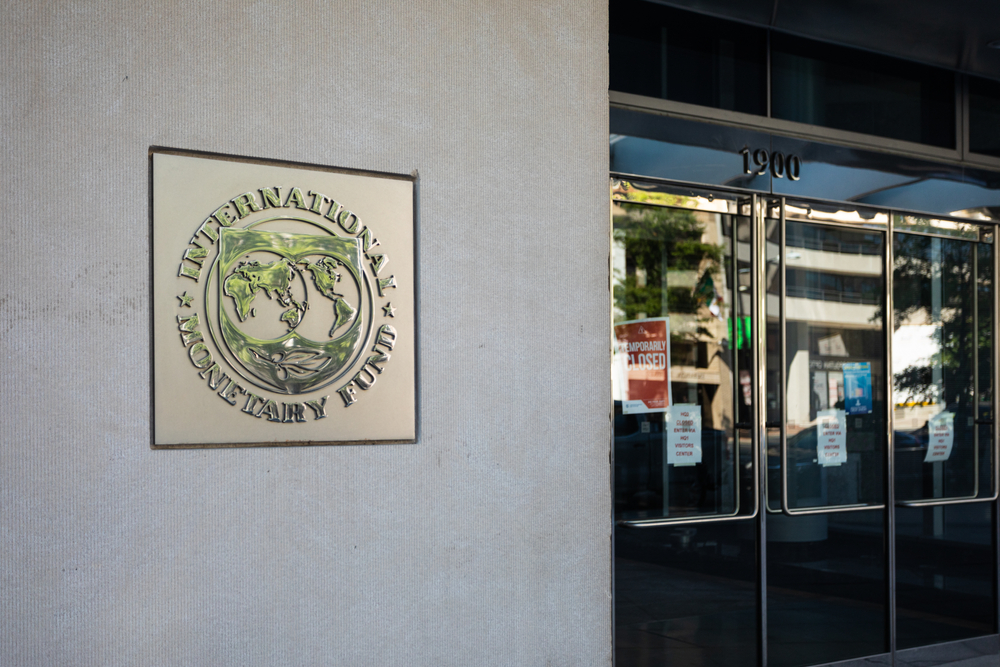An Upcoming Paper Gold Crisis?

Arsel Ozgurdal/Shutterstock
Les Nemethy and Alberto Scalabrini investigate the possibility of problems in the paper gold market and the impact of that for markets and investors alike.
Photo by Arsel Ozgurdal/Shutterstock
There is vastly more “paper gold” (Exchange Traded Funds , or ETFs, gold contracts, futures, options, and the like) than physical gold. The relative values are put at some USD 200 trillion-300 trillion for the former, according to bullionstar.com, compared to about USD 11 tln of physical gold (of which central bank holdings would constitute ca. USD 1 tln), according to investmentweek.co.uk
The majority of paper gold is in the form of contracts traded on the London Bullion Market and COMEX (part of the Chicago Mercantile Exchange), where bullion banks are engaged in fractional reserve bullion banking. In the same way that banks have liabilities that vastly exceed reserves, so too bullion banks issue gold contracts that vastly exceed the amount of gold they hold on deposit.
Similarly, the majority of gold ETFs only have a fraction of the gold on hand, compared to the face amount of gold ETFs in circulation. Conventional banks are quite heavily regulated, hence relatively transparent, whereas bullion banks are lightly regulated, and opaque, bullionstar.com notes.
Wherever there is fractional reserve banking, there can theoretically be a run on the bank, particularly where there is a sudden loss of confidence. Already in March 2020, when stock markets experienced a strong downward adjustment, several gold dealers were selling physical gold at 10-15% above the spot price, as bloomberg.com reported at the time.
When you put your money into a bank, the money belongs to the bank, and in the case of bankruptcy will serve to pay the creditors of the bank; similarly when you buy gold from a bullion bank, chances are that this is in an “unallocated” account, which legally means you are loaning your gold to the bullion bank, and in the case of a bankruptcy of the bullion bank, you will merely be an ordinary creditor.
To protect yourself, you may choose to put your gold into an “allocated” account, but then you must pay significant storage fees and insurance. However, allocated gold will remain your gold even in the case of bankruptcy of the bullion bank.
It is estimated by the London Bullion Market Association that 95% of the transactions in London’s precious metals markets are in unallocated metal. There is more paper gold traded in one day than all the physical reserves in the world, bullionstar.com says, confirming the predominant importance of paper gold.
Tipping Point
Given that the paper gold market is so much larger than the physical market, price formation typically occurs in the paper market, while the physical market is a price taker. However, in the event of a major crisis, there may be a theoretical tipping point, when enough holders of paper gold wish to convert to physical gold or enough shorts wish to cover their positions, that could lead to a run on physical gold. There is, bullionstar.com points out, a risk of a disconnect between physical and paper gold prices.
In March 2020, there was such a dislocation in the New York gold market, as bullion banks came very close to not being able to deliver physical gold against contracts. While this was blamed on COVID-19, and the lack of ability to ship in supplies from European refineries (some of which were closed due to COVID), it demonstrates the danger of thin physical gold inventories, as Bloomberg points out.
What might be a trigger for such a run on physical gold? Despite the very recent (and probably temporary) softness in gold, one doesn’t need to go too far to think of theoretical examples: a contested U.S. election, leading to major domestic violence; a Chinese invasion of Taiwan or a war in the middle east; a sudden surge in inflation, leading to higher interest rates, triggering a wave of bankruptcies and defaults, to name a few.
We are not suggesting that any of the above will happen, let alone trying to forecast the timing of such events, but neither are any of the above events to be dismissed as highly improbable “black swans”. One might call them “grey swans”.
In any of the above cases (or other extreme events), paper gold prices might collapse, and physical gold prices could go through the roof. Let us assume that half of the value of paper gold were wiped out; the evaporation of more than USD 100 tln in paper gold value could theoretically in and of itself trigger a recession, or turn a recession into a depression.
So what are the “take home” messages of this article? First, there is a need for more transparent regulation of bullion markets. Second, from the perspective of you, the investor, if safety is the objective, we recommend holding physical gold (bullion bars, gold coins, etc.) or, if you choose paper gold, at least be aware of the risks.
Les Nemethy is CEO of Euro-Phoenix (www.europhoenix.com), a Central European corporate finance firm, author of Business Exit Planning (www.businessexitplanningbook.com) and a former president of the American Chamber of Commerce in Hungary.
SUPPORT THE BUDAPEST BUSINESS JOURNAL
Producing journalism that is worthy of the name is a costly business. For 27 years, the publishers, editors and reporters of the Budapest Business Journal have striven to bring you business news that works, information that you can trust, that is factual, accurate and presented without fear or favor.
Newspaper organizations across the globe have struggled to find a business model that allows them to continue to excel, without compromising their ability to perform. Most recently, some have experimented with the idea of involving their most important stakeholders, their readers.
We would like to offer that same opportunity to our readers. We would like to invite you to help us deliver the quality business journalism you require. Hit our Support the BBJ button and you can choose the how much and how often you send us your contributions.









